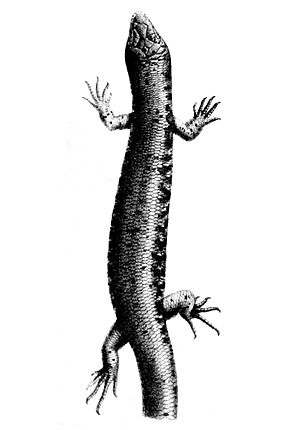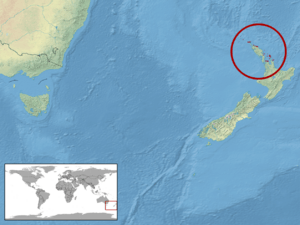Oligosoma suteri facts for kids
Quick facts for kids Oligosoma suteri |
|
|---|---|
 |
|
| Conservation status | |
| Scientific classification | |
| Genus: |
Oligosoma
|
| Species: |
suteri
|
 |
|
| Synonyms | |
|
|
Oligosoma suteri, also known as Suter's skink, the black shore skink, or the egg-laying skink, is a type of lizard found only in New Zealand. It belongs to the skink family. This special skink is unique because it's the only native New Zealand skink that lays eggs!
Contents
Reproduction: Egg-Laying Skinks
Suter's skink is the only native New Zealand skink that lays eggs. This is why it's often called the "egg-laying skink." (Another egg-laying skink, the rainbow skink, is found in New Zealand, but it originally came from Australia).
Female Suter's skinks dig nests to lay their eggs. They hide their eggs under sand, small stones, or larger rocks. This usually happens from late December to mid-February.
The eggs hatch faster if they are kept warm. For example, if eggs are kept at 22 °C (about 72 °F), they take about 75 to 80 days to hatch. If they are kept a bit warmer, at a constant 26 °C (about 79 °F), they can hatch in about 55 days.
Where Suter's Skinks Live
Oligosoma suteri lives on islands off the northern coast of New Zealand. You can find them from the Three Kings Islands all the way to the Alderman Islands. These islands are located north of 37°S latitude.
What Suter's Skinks Do
Suter's skinks live along the coast, often very close to the ocean. They mainly eat tiny sea creatures called amphipods. These amphipods, in turn, eat dead seaweed that washes ashore.
These skinks are good swimmers and are known to hunt for their food in rock pools. Suter's skinks can live in very large groups. In some places, you might find up to 13 skinks in just one square meter! This is one of the highest lizard populations recorded anywhere in the world.
Who is Suter?
The scientific name for this skink, suteri, and some of its common names like "Suter's skink," honor a person named Henry Suter. He was a zoologist and palaeontologist from New Zealand who lived from 1841 to 1918.


